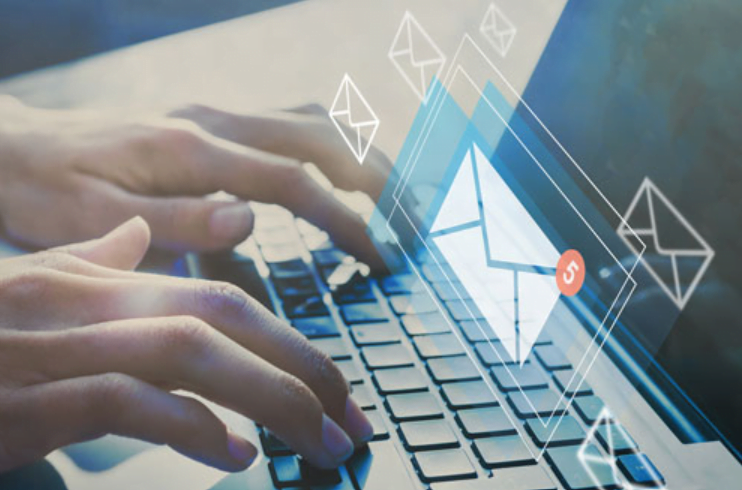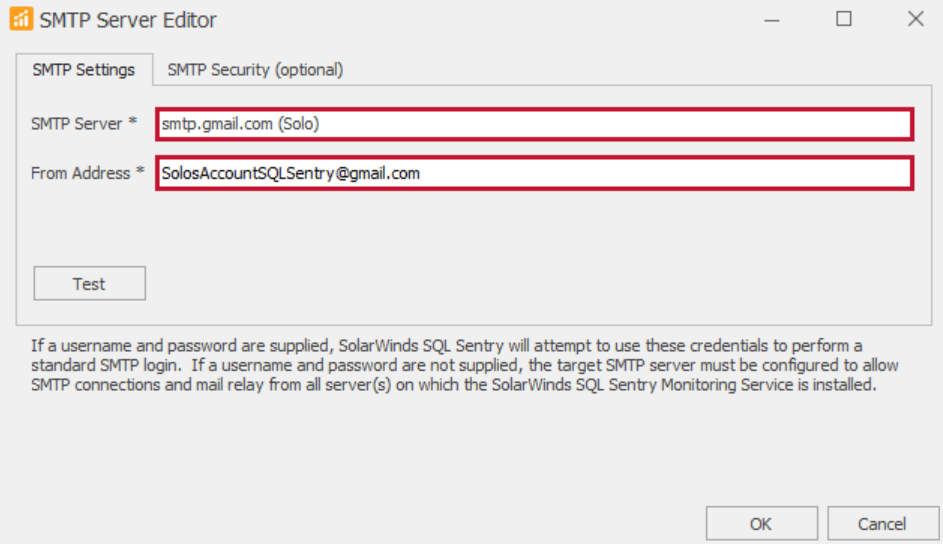When it comes to sending emails, SMTP (Simple Mail Transfer Protocol) plays a crucial role in ensuring that your messages reach their intended recipients. However, like any technology, SMTP is not without its challenges and potential pitfalls. In this blog post, we will discuss how you can master SMTP and avoid common issues that may arise during email communication.
Understanding SMTP Basics and Common Pitfalls
SMTP, standing as the cornerstone for email communication, operates by establishing a connection between an email client and server, facilitating the transfer of messages to their designated recipients. Despite its widespread utility, users often encounter deliverability challenges, a prevalent issue that underscores the need for a deep dive into SMTP’s intricacies.
Deliverability hiccups primarily surface when emails inadvertently land in spam folders, a scenario that detracts from the efficacy of communication efforts. This predicament is generally deeply related to insufficient email authentication and a bad sender reputation, the two major components that are used to measure trust in the email world.
The essence of these deliverability woes can be traced back to a lack of stringent authentication protocols and oversight of the sender’s reputation. With e-mail being a widely used medium in the world of professional communications, the implications of such problems are no longer just area-specific. They are not only the barriers that hinder the transaction of information but also reduce the trust of digital networking.
The process of SMTP, which relies on server-to-server communication, subject us to the necessity of a thorough understanding of the framework of the operation to diagnose and correct these frequent errors.
The process of dealing with these problems can be initiated by a detailed comprehension of the possible advantages of SMTP and the risks that it faces. By pinpointing the most common causes of deliverability problems users will be able to act at the early stages, and the communication won’t be disturbed. Besides, it will help to ensure long-term security. Studying the core principles of SMTP and prominent barriers is essential when fine-tuning your email delivery route and guaranteeing the safe transfer of information without interruptions, which are quite common in email communication.
Implementing Robust Authentication Mechanisms
The cornerstone of safeguarding your email delivery and reputation in the SMTP realm hinges on the deployment of effective authentication standards. Embracing SPF (Sender Policy Framework), DKIM (DomainKeys Identified Mail), and DMARC (Domain-based Message Authentication, Reporting, and Conformance) is not merely a best practice; it’s a necessity for ensuring the legitimacy of your emails in the eyes of receiving servers and your audience. SPF allows you to specify which mail servers are permitted to send email on behalf of your domain, significantly reducing the risk of spoofing and unauthorized use of your domain.
Meanwhile, DKIM adds an encrypted signature to the header of your emails, providing a method for the receiver to validate that the email hasn’t been tampered with and indeed originates from your domain. However, DMARC builds on SPF and DKIM, adding a protocol for receiving email servers to determine what to do with emails that do not pass the SPF or DKIM checks, including reporting mechanisms to clarify the potential abuse of your domain in an email campaign.
Such protocols become correct to be implemented with sufficient care and constant reviewing to keep up with the dynamic data security trends and compliance demands. It calls for a broad technical and strategic approach skill which would involve setting the mechanisms into line with the overall mail security posture. SPF, DKIM, and DMARC implementation not only adds strength to e-mail security but also raises the bar against phishing and other malicious activities and in this way gives a strong title to email reliability and integrity in the digital world.
Regularly Monitoring and Updating SMTP Server Settings
Keeping your SMTP server settings current is crucial for maintaining the security and efficiency of your email communications. This job is beyond setting it and forgetting it; it requires close attention and reviews from time to time to prevent deliverability issues that may happen in the future or new security threats that may emerge. The major solution that we suggest is TLS encryption for enveloping the data and keeping it safe during transfer; this technique is often used to protect sensitive information in e-mail systems.
Besides, setting up accurate reverse DNS records becomes a top priority. These records are often scrutinized by receiving email servers as a part of their anti-spam measures, and inaccuracies here can lead to your emails being rejected or marked as spam.
Equally important is the active monitoring of your email traffic. This step is the key instrument of the diagnosis activity, to identify some unexpected things that may be the risk sign for a security breach such as many emails that have appeared suddenly. Therefore, by analyzing the volume of emails that are sent, you can respond to a situation in a timely and find a way to address the issues that are meant to protect the reputation of the sender and the integrity of your email system.
As such, SMTP server updates to the latest software versions and patches must be a rule of thumb. Developers are constantly polishing and updating email servers to detect and fix the taps and to build more capabilities. Providing no attention to software updates might enable your email environment to come under attack and diminish its effectiveness due to delays in or even failure of email delivery.
The adoption of these proactive measures will serve as proof that the SMTP setup of the server is indeed robust, secure, and of high quality, thus eliminating the usual problems that often go along with unattended, outdated, or badly managed email servers.
Best Practices for Managing Email Lists
High-quality email list management is in the same vein as successful SMTP operations since its effects on deliverability and sender reputation are quite profound. Therefore, you should do your best to regularly clean your subscriber base of people who are no longer reading your emails and increase the number of engaged subscribers. Another way that could be efficient is to use the double opt-in process. This will allow the subscriber to feel more confident about their interest in your listing. At the same time, it will help you to confirm the email address of the user and improve the quality of your database, which will inevitably reduce the number of unopened or incorrectly addressed emails.
Regularly pruning your email list plays a crucial role as well. Identifying and removing addresses that consistently fail to engage with your content keeps your list healthy and improves overall performance. Such tasks can be automated by many email marketing packages that keep track of user engagement and remove inactive subscribers gradually over time.
After that, you can also split your email list according to the user’s behavior and preferences so that your customers receive highly targeted and relevant email campaigns. Customizing content to fit the unique interests of various groups has a high chance of getting higher opening and click-through rates with an audience that is more active and participatory.
It’s also a mandatory task to take user preferences and consent into account and follow regulations e.g. GDPR. Offer clear unsubscribe choices and manage the subscriptions accordingly, to guarantee compliance and give the subscribers autonomy in decision making. This is not only about being compliant but also about building trust between you and your audience for them to have control over their inbox.
Using these email list management practices out of concern will prevent the problems linked with the deliverability and engagement of the email and improve the overall effectiveness of your SMTP-related communication.
Understanding the Importance of Proper Error Handling
Navigating the complexities of SMTP requires not only diligence in setup and maintenance but also a keen eye for detecting and addressing errors efficiently. Proper error handling is essential to smooth email performance as no errors should be left undetected and rectified immediately. It is done by analyzing email delivery reports and bounce messages which You can consider as immediate feedback for your sent emails and whether they are successful or not. These reports may pinpoint errors like incorrect email addresses and other backend issues like the recipient’s server problems that may hinder successful email delivery.
Automated alerts play a key role herein, providing real-time notifications of critical errors that might affect email deliverability or inject security risks. By setting up these warnings, administrators will be able to quickly inspect and rectify problems, the impact of which on email communications is reduced to a minimum.
Apart from this, mastery of SMTP error codes’ intricacies is critical for successful diagnostics and solutions. These messages contain valuable information on why an email did not arrive and to help identify the source of the trouble. Whether it’s a temporary issue requiring a resend or a more significant problem necessitating a review of server settings or authentication mechanisms, a thorough grasp of error handling empowers users to uphold the integrity and reliability of their email communications.
Implementing a Reliable Backup Strategy
In an environment where data integrity is the primary concern, it is imperative to develop a sufficient backup strategy for your SMTP services’ activities. With this preventive approach, you achieve a certain integrated system that hedges your email against possible cases of data loss or service breaks due to unexpected unpredictable circumstances. In this strategy, you will have to back up the primary pieces weekly such as server settings, configurations, and all the email archives at least. Through this dedication, the much-needed speed recovery and uninterrupted operations are facilitated, sooner after a server failure or data inconsistency.
Adding backup systems to the on-site and off-site locations increases this strategy by creating a safety net that is not dependent on a specific location. With onsite backups, immediate accessibility is a benefit while offsite backups enhance data security by protecting the data from damage at the physical level or system failures in the locality. Automating backup processes also optimizes the efficiency of the whole task by enabling consistent data protection without having to intervene manually.
Testing the backup integrity and how well the restore procedures work is also critical in ensuring that the backups are not just current but also fully operational when needed. The fundamental principle of overall email backup management ensures that your email communication channels stay stable and available for use even if the SMTP challenges are around the corner.
Stay tuned to offshorededi.com for more info and guides.


